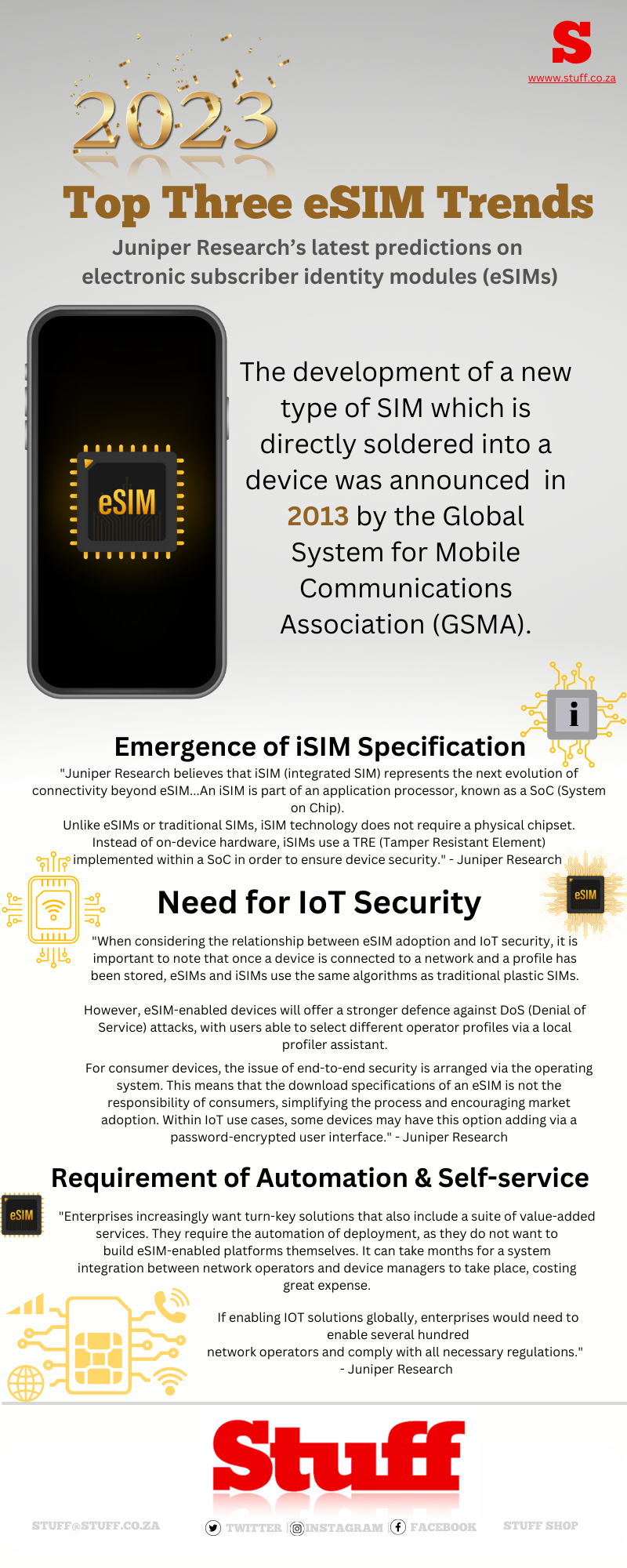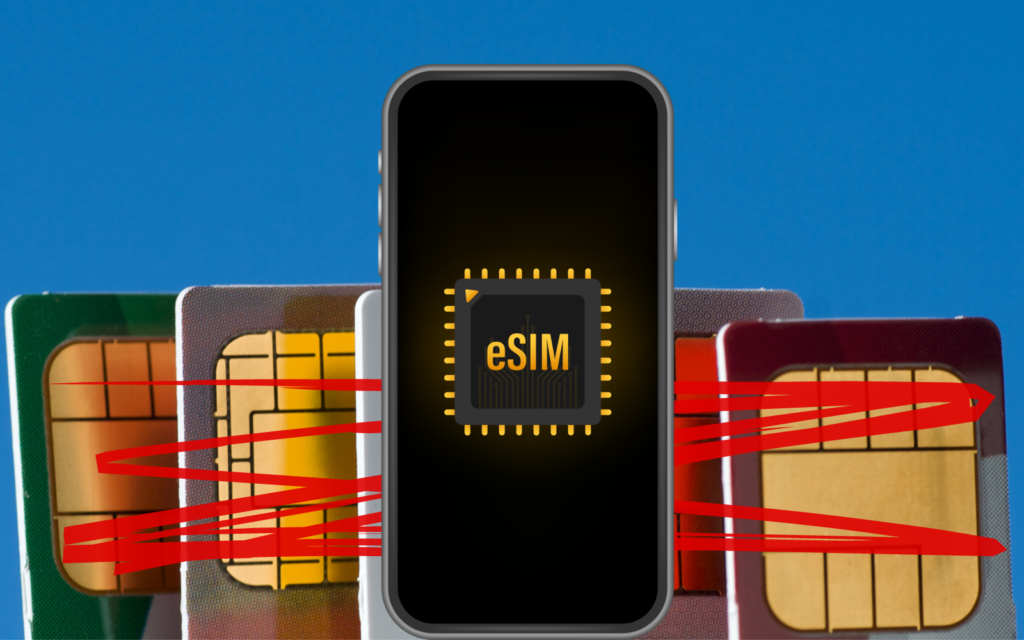Electric subscriber identity modules (eSIMs) will soon do to physical SIM cards what the cloud did to memory sticks. They’ll make them slowly and quietly disappear.
Juniper Research’s latest research on SIM cards suggests a spike in eSIM usage in 2023. According to the study, electronic SIMs (eSIMs) will increase from US4.7-billion (R80 billion) in 2023 to $16.3 billion (R280 billion) in 2027.
The research follows Apple launching its iPhone 14 in the US without a SIM tray for a physical SIM card. The phone uses an eSIM instead. Apple is expected to create more iPhones enabled for the technology across the US and Europe.
Read More: The new eSIM card is a boon to consumers and a possible threat to mobile networks
However, the Android market is expected to drive the spike in eSIMs. In some parts of the world, Google Pixel devices and Samsung Galaxy devices are already eSIM enabled.
According to Juniper’s research, active eSIMs will increase from 986 million to 3.5 billion by 2027. Their introduction to more devices will offer benefits. Physical cards, especially the ones that are never recovered after they go missing, contribute to e-waste.
Juniper says manufacturers such as Google and Samsung will develop Apple-equivalent devices for Android “in order to compete with Apple and maintain their global market positioning”.
Though some tech companies, including Apple, Google, and Samsung, are leading the pack with the introduction of eSIMs, a lot still needs to be done. More devices still need to be rendered compatible with network providers. More countries also need to create regulations specifically for eSIMs. As for South Africa, we hope it’ll be less drama than the one experienced when RICA reared its ugly head in 2005.

Souce: Juniper Research




